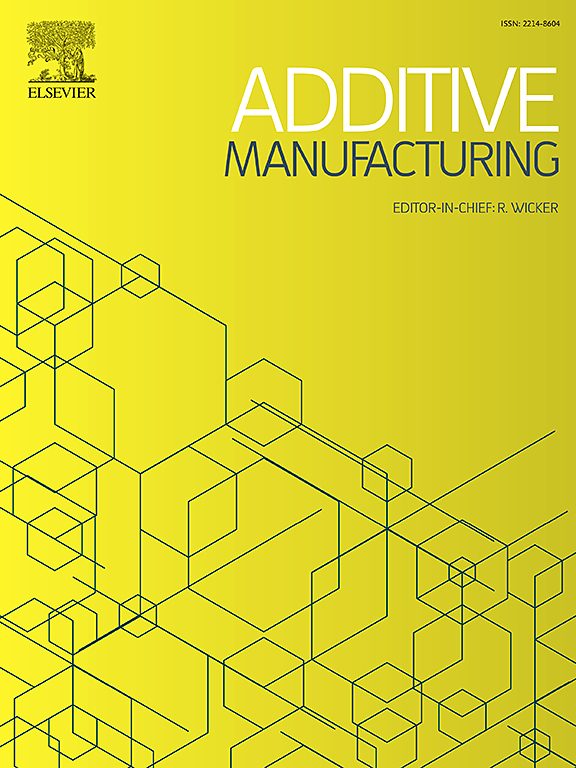Suspended bioprinting with in-situ elasticity monitoring using the assessment of shear wave phase velocity
IF 10.3
1区 工程技术
Q1 ENGINEERING, MANUFACTURING
引用次数: 0
Abstract
Suspended bioprinting has recently emerged as a promising alternative for fabricating intricate tissue-engineered scaffolds by enabling the precise deposition of low-viscosity bioink within a support bath, overcoming the limitations of conventional bioprinting methods. However, the dynamic monitoring of scaffold mechanical properties during fabrication remains a significant challenge. This study introduces a novel approach for suspended bioprinting with in-situ elasticity monitoring (SBEM), leveraging ultrasound shear wave elastography to nondestructively and dynamically assess the elastic properties of the bioprinted constructs. Using a custom-designed 3D bioprinting system, alginate and gelatin methacrylate (GelMA) scaffolds with varying cellulose nanocrystal concentrations and diverse geometries were fabricated in a Carbopol support bath. Phase velocities of shear waves were tracked and analyzed to estimate the storage moduli, validated against conventional rheometry. The SBEM approach demonstrated high temporal resolution in monitoring of elasticity changes during photocrosslinking. Additionally, cell-laden GelMA scaffolds maintained high cell viability after the measurement, confirming the biocompatibility of the technique. This approach addresses critical limitations in real-time mechanical monitoring, offering a scalable, nondestructive solution for optimizing scaffold properties during suspended bioprinting. The SBEM method holds significant potential to advance precision and quality control in tissue engineering applications.
求助全文
约1分钟内获得全文
求助全文
来源期刊

Additive manufacturing
Materials Science-General Materials Science
CiteScore
19.80
自引率
12.70%
发文量
648
审稿时长
35 days
期刊介绍:
Additive Manufacturing stands as a peer-reviewed journal dedicated to delivering high-quality research papers and reviews in the field of additive manufacturing, serving both academia and industry leaders. The journal's objective is to recognize the innovative essence of additive manufacturing and its diverse applications, providing a comprehensive overview of current developments and future prospects.
The transformative potential of additive manufacturing technologies in product design and manufacturing is poised to disrupt traditional approaches. In response to this paradigm shift, a distinctive and comprehensive publication outlet was essential. Additive Manufacturing fulfills this need, offering a platform for engineers, materials scientists, and practitioners across academia and various industries to document and share innovations in these evolving technologies.
 求助内容:
求助内容: 应助结果提醒方式:
应助结果提醒方式:


